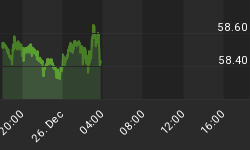Nowadays, Republicans and Democrats don’t usually agree on much. But in a rare bipartisan show, they have found a common ground and locked arms to tame what they see as the share buyback beast.
Senators Bernie Sanders (I-Vt) and Chuck Schumer (D-NY) have penned an op-ed arguing that buybacks have become an enemy of the American worker and that corporate boardrooms have now become obsessed with only maximizing shareholder returns to the detriment of workers.
They point to Walmart as an example, after the company spent $20 billion on buybacks last year but laid off thousands of workers and even shuttered a number of Sam’s Club stores.
The two camps have proposed different solutions but aim at a common objective: clamping down on buybacks.
The two senators contend that curbing buybacks would make the American economy fairer and more productive. They have proposed enacting legislation that will introduce pre-conditions that will require, among other things, that companies pay all workers a $15 minimum wage and demonstrate long-term strength before entering a buyback plan.
But judging by early first quarter data, corporate buybacks could be headed for yet another banner year.
Keeping markets firing
On one hand, Congress does have a point. Nowadays, companies view buybacks and dividends as the low-hanging fruit and go to great lengths to boost shareholder returns. For instance, 459 companies managed to remain in the S&P 500 consistently in the period spanning 2006-2015. During that time, the companies spent a staggering $3.9 trillion on buybacks, working out to 54 percent of their net income. In sharp contrast, back in 1981, S&P 500 companies spent a mere 2 percent of their profits on the line-item. Related: Regulators Charge First Company Ever For Fake Amazon Reviews
In 2017, S&P 500 companies spent half of their profits on buybacks and another 41 percent on dividends leaving just 9 percent for growth-related expenses including capex and R&D.
Yet, the figures keep growing.
In 2018, companies announced share buybacks exceeding $1 trillion, all-time high no doubt fired up by Trump’s $1.5-trillion tax package. Yet, Bank of America Merrill Lynch estimates that repurchases are already up 91 percent year over year, with staples, materials, tech and finance leading the charge in that order. The past week saw nearly $2.8 billion in repurchases, marking the fourth-highest level since the bank began tracking the data point a decade ago.
According to BofAML, the current pace of buybacks suggests another record year especially for the four industries and could eclipse last year’s mark. With 89 percent of companies have reported Q4 2018 earnings by Feb. 22 as per Thomson Reuters data, authorized buybacks have come in just 1 percent below third-quarter record levels.
Despite stiff opposition from politicians, investors are probably not complaining. Corporate repurchases provide a large source of demand for shares and can keep things chugging along in an otherwise dull market. Indeed, all but one of the buyback champs mentioned above already boast double-digit returns, with the Consumers Select Sector Fund ( XLP) up 6.8 percent YTD; Materials Select Sector Fund (XLB) has gained 11 percent, Technology Select Sector Fund (XLK) 14.8 percent and Financial Select Sector Fund (XLF) 11.4 percent in the timeframe.
Indeed, things could get really dire if buybacks stopped altogether. Repurchases have become the key driver of the 10-year bull market. According to Nick Colas, co-founder of Data Trek Research, over the past three years, investors took about $232 billion out of ETFs and mutual funds while companies pumped in $1.8 trillion through repurchases. In other words, repurchases are largely responsible for the net demand in US shares, and without them, the markets would experience net capital outflows with dire consequences.
But that’s not all. As Rob Arnott, chief of Research Affiliates has noted, buybacks channel earnings from slow growth companies to fast-growing ones and thus help boost overall productivity. The fluid system furnishes capital by taking money from companies like P&G and GM to the next Apple or Amazon. Further, buybacks do help to goose earnings, albeit artificially, by lowering the available share float.
Middle ground
Perhaps what the pro-and-anti-buyback crusaders need is to find common ground. The American worker certainly needs protection from unbridled capitalism while a severe cutback in buyback activity could have immediate and undesired repercussions on the economy.
Plus Congress needs to do a better job this time. The Tax Law has already had unintended consequences with the current deficit rising sharply and large companies using tax loopholes to pay zero income tax. Passing laws that only limit repurchases might only serve to encourage companies to engage in worse alternatives such as mergers.
Finally, Colas has warned that buybacks are deeply cyclical in nature, and the fact that they have reached a size that worries Congress could signal a profit top.
By Alex Kimani for Safehaven.com
















